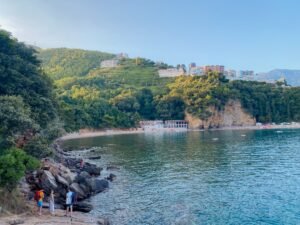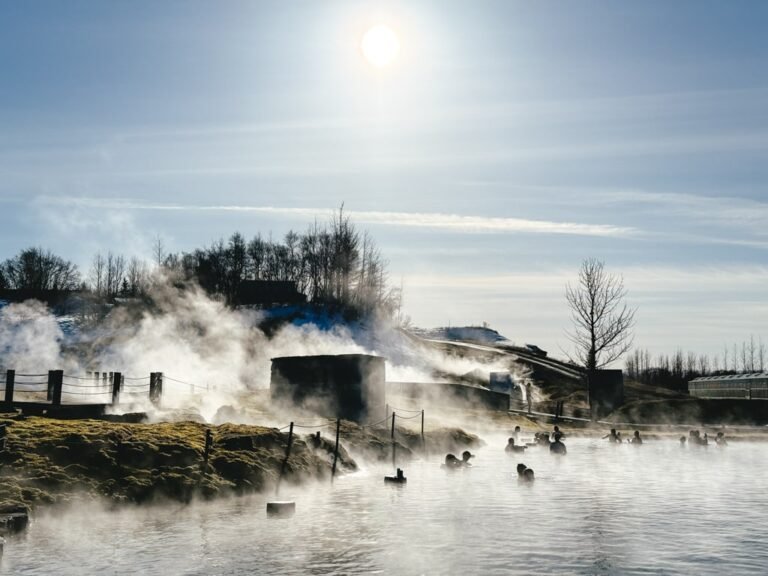This article may contain affiliate links. When you purchase something we recommend, we make a small commission. You don’t pay anything extra. 💘 For more details, check out our Terms of Use page.
I’ve had the fun of visiting Malta twice now.
The first time was a spontaneous solo trip after peak summer, and the second was during the festive season in winter for a scuba diving getaway.
And honestly? There’s something special about this place that sticks with you, no matter the season. Whether you’re here for the history, the sea, or just a quick escape from the mainland, Malta delivers. It’s small but full of character, and ideal for first-time visitors looking for a taste of something different.
Table of Contents
ToggleWhere is Malta and How Do You Get There?
Malta is a small island country located between Sicily and the North African coast. Despite its size, it’s incredibly easy to get to from most European cities, especially with low-cost airlines like Ryanair and Wizz Air flying directly into Valletta (Malta International Airport).
From the airport, you’re only about 20–30 minutes away from most major towns including Valletta, Sliema, and St. Julian’s.
Overall, it is probably one of the best destinations for Europeans. It is also consintenly ranked as the scuba diving capital of Europe and it’s capital Valletta was desginated Europe’s Capital of Europe back in 2018.
Why Malta is Perfect for a Short European Getaway
- It’s compact. You can explore a lot without needing to travel far.
- It’s well-connected. Buses, ferries, and taxis make it easy to get around.
- It’s affordable. Especially off-season, Malta is cheaper than most of Western Europe.
- It has variety. You can see ancient cities, swim in clear blue water, eat great food, and go diving all in one trip.
You don’t need a full week to enjoy Malta. Even 3 to 5 days can leave you feeling like you’ve actually been somewhere.
When to Visit Malta
I’ve had the chance to visit Malta in both early winter and around autumn, and honestly, those are my favorite times to go.
Summer would probably be my least favorite not because Malta isn’t beautiful then (it absolutely is), but because I’m not a big fan of exploring in extreme heat. I prefer walking, wandering, and seeing the sights without constantly looking for shade or AC. Even in late October, it was still hot 29°C and sunny and I was able to go swimming without any issue. Winter is cooler, of course, but still very manageable, and a great time to avoid the crowds while enjoying the island at a slower pace.

Getting Around Malta
If you’re not renting a car, you’ll be happy to know that Malta is very doable by public transport. The bus system covers most of the island and is affordable, which is what I did on my first trip.
But you’ll have to be patient, especially during the peak season.
Ferries are a great way to hop between places like Valletta and Sliema or to cross over to the Three Cities. And for Comino or Gozo, boat tours and ferry lines run regularly (though some are weather-dependent in winter).
If you are driving, prepare for narrow streets and limited parking in historic areas but the freedom to explore Gozo and the more rural areas can be worth it.
I use and compare prices for car rentals, with Discovercars.com. It is a giant rental and comparison site on the market and it has a lot of perks that make sense if you travel often.
Once you head to Discover Cars, you’ll find an easy search engine to filter by location, dates and pick up location.
Tip: Always check a few different pick up locations when booking a rental car.
Where to Stay in Malta
Both times I visited Malta, I stayed near Sliema but deliberately away from the central party zone. And honestly, it was perfect. The area is super convenient for getting around, especially if you don’t plan on renting a car. You’ve got access to ferries, buses, and plenty of walkable spots. The first time, I stayed in a hostel, which was great for meeting other travelers. The second time, I booked a full apartment with a small kitchen, and that made a huge difference. Being able to cook or prep a light meal even once during the trip helped save money and time.
If you’re not renting a car, I’d recommend staying somewhere central like Sliema or even Valletta (just keep in mind you’ll need to walk a bit with your bags to reach some spots). But if you are driving, you’ve got more flexibility and staying outside the main tourist areas can offer a more local, quiet vibe. If you are diving, then I recommend staying in Gozo for those dive days, to have less of a commute in the early morning.
Top 5 Things to See for First-Time Visitors in Malta
You don’t need a massive checklist when visiting Malta for the first time just a handful of incredible places that capture the island’s history, beauty, and spirit. Here are five that I think every first-time visitor should experience:
1. Mdina
Mdina is a city frozen in time. Once the capital of Malta, this fortified hilltop town dates back over 4,000 years and was once home to noble families and religious leaders. Its nickname, “The Silent City,” comes from the peaceful atmosphere.
This is a car free zone where narrow streets wind between honey-colored buildings and ancient churches. The photos alone can give you an idea of how magical it is.
I recommend visiting Mdina in the late afternoon and staying until after sunset. As the sun dips low, the city takes on a golden glow, and the crowds thin out.






2. Comino or the Blue Grotto
You can’t come to Malta and skip the water. Whether you choose a boat trip to the Blue Lagoon on Comino or head to the stunning Blue Grotto for a short boat ride and cliffside views, both options are perfect for first-timers.
Comino is a tiny island between Malta and Gozo, known for its surreal turquoise water and while it can get busy, it’s still worth it for a few hours of swimming, relaxing, or taking a boat tour. Come prepared though with supplies, because there is not a ton of space and the food and refreshments options are limited. You might want to pack some more swimming gear as well so you can get comfortable for those 4+ hours.
The Blue Grotto, on the other hand, is more dramatic, with a series of sea caves that reflect the light in dazzling blues.
Both give you a taste of Malta’s coastal beauty and offer a great way to cool off, especially if you’re visiting during warmer months.


3. Valletta
Valletta may be the smallest capital city in the EU, but it’s absolutely packed with history and culture. Built by the Knights of St. John in the 1500s, it’s now a UNESCO World Heritage site and walking through it feels like stepping into a living museum.
There’s so much to do here. Start with St. John’s Co-Cathedral, which is home to Caravaggio’s famous painting The Beheading of Saint John the Baptist. Pop into the National Museum of Archaeology, or visit Spazju Kreattiv, a cinema-meets-art-space with modern installations. The city is also full of cafes, wine bars, and scenic spots like the Upper Barrakka Gardens, which offer some of the best views over the Grand Harbour.
Valletta is compact, which makes it easy to explore on foot.








4. The Three Cities
For a quieter, more local day out, head to Vittoriosa (Birgu), Senglea (Isla), and Cospicua (Bormla) known collectively as the Three Cities.
Located just across the harbor from Valletta, these historic towns offer a slower pace and just as much beauty, without the crowds.
You can easily spend a full day walking through the narrow lanes, exploring churches and waterfronts, and stopping for a relaxed lunch in one of the cozy local spots. This area is also home to the Malta at War Museum, which gives a powerful look into the country’s role in World War II.
It’s a great contrast to Valletta and was one of my favorite spots on my first visit.






5. Gozo
Gozo is often overlooked by short-term visitors, but if you have the time, it’s absolutely worth the effort. You’ll need to take a longer ferry ride and potentially drive to explore properly, but what you get in return is a wilder, more rural side of Malta.
Gozo has dramatic cliffs, charming villages, and plenty of outdoor activities. You can hike coastal trails, dive at world-class sites (including the spot where the Azure Window once stood), or simply enjoy the slower pace and natural beauty.
It’s a great day trip or even better, a place to spend a night if you want to escape the bustle of the main island and really soak in something different.


Did you skip to the end, here is the recap:
- Stay near Sliema or Valletta if you want easy access without a car.
- Go off-season if you can — October to March is ideal for fewer crowds and better prices.
- Prioritize just a few great places: Mdina, Valletta, Comino/Blue Grotto, the Three Cities, and Gozo.
- Don’t skip the water. Malta’s coastlines are half the experience.
You Might Also Enjoy

Where I’d Go in Europe This Fall (If I Were You)
Planning a trip to Europe this fall? These destinations are perfect for October & November—cool weather, cheaper prices, and way fewer tourists.

Scuba Diving in Malta in Winter: How to Prepare and What to Expect
Planning a scuba diving trip to Malta in winter? Discover the best dive sites, how to get to Gozo, what to expect from marine life, and why Malta is a top cold-season diving destination in Europe.

First Time in Malta? 5 Things to Add to Your Weekend Trip
Don’t get overwhelmed. Here are five key spots you’ll want to add to your first Malta trip.



